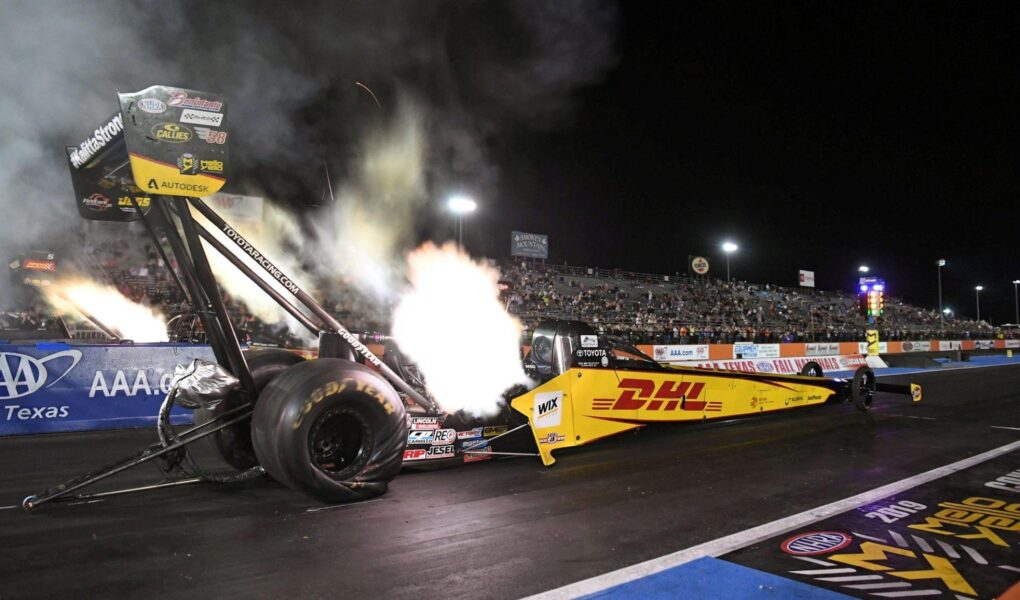Revving Up the Excitement: An Introduction to Top Fuel Drag Racing
In the world of motorsports, where speed meets adrenaline and engineering prowess converges, few events command attention quite like Top Fuel drag racing. A vibrant spectacle of power and precision, Top Fuel boasts some of the fastest and most fearsome machines ever created, each designed to harness explosive energy in the blink of an eye. As these drivers launch down the quarter-mile strip, they push the boundaries of physics, racing against time—and each other—in a contest that is as much about skill and strategy as it is about raw horsepower. Join us as we delve into the thrilling realm of Top Fuel drag racing, exploring its history, the technology that propels it forward, and the passionate community that keeps the fires of competition burning bright. Whether you’re a seasoned fan or a newcomer eager to learn, the world of Top Fuel promises an exhilarating ride.
Table of Contents
- The Thrill of Speed: Understanding the Mechanics Behind Top Fuel Drag Racing
- Championing Innovation: The Technology Driving Performance in Top Fuel Motors
- Safety First: Best Practices and Evolving Standards in Drag Racing
- Behind the Scenes: The Role of Team Dynamics and Strategy in Winning Races
- Q&A
- The Conclusion
The Thrill of Speed: Understanding the Mechanics Behind Top Fuel Drag Racing
The roaring engines and blinding speed of top fuel drag racing captivate both fans and participants alike. At the core of this electrifying motorsport lies a complex interplay of engineering and aerodynamics that makes these vehicles among the fastest on Earth. A typical top fuel dragster is equipped with a supercharged V8 engine that can generate over 10,000 horsepower, propelling the car from 0 to 330 mph in less than 3.7 seconds. To achieve such breathtaking speeds, these machines use a variety of advanced materials and designs, including:
- Lightweight carbon fiber: Reduces the overall weight, improving acceleration.
- High-strength steel frames: Provides structural integrity for safety.
- Aerodynamic body shapes: Minimized drag, maximizing speed.
But it’s not just the machinery that drives the thrill; the mechanics of drag racing also involve precise timing and coordination. Each run requires a meticulous series of actions from the driver and crew, especially when it comes to the launch. The use of a multi-stage clutch system is crucial in managing the enormous torque produced by the engine, enabling a smooth transition from standing starts to blistering acceleration. The pit crew plays a pivotal role as well, ensuring the tires are heated to the optimum temperature for grip, with tire pressures carefully balanced to withstand the immense forces during a run. As the cars thunder down the strip, the thrill of speed is matched only by the meticulous science that makes it all possible.
Championing Innovation: The Technology Driving Performance in Top Fuel Motors
In the exhilarating world of top fuel drag racing, the integration of advanced technology is crucial for achieving unprecedented performance levels. Drivers and teams are continually pushing the boundaries of engineering to enhance speed and efficiency. Innovative components such as lightweight carbon fiber chassis, high-performance fuel pumps, and state-of-the-art telemetry systems are just a few examples of how technology plays a vital role in this competitive arena. These elements work in harmony to ensure maximal power output and minimal drag, which are essential for shaving milliseconds off elapsed times.
Moreover, the use of sophisticated simulation software allows teams to analyze and optimize every aspect of their performance. By utilizing data analytics, engineers can simulate various race conditions and tire performance, enabling fine-tuning of components and strategy. The advent of advanced fuel mixtures and ignition systems has also been instrumental in producing greater horsepower. With the continuous evolution of technology, the race is not only against competitors but also against time and physics.
| Technology | Impact on Performance |
|---|---|
| Carbon Fiber Chassis | Reduces weight, enhancing speed |
| Telemetry Systems | Real-time data analysis for optimization |
| Sophisticated Simulation Software | Improves strategy and component tuning |
| Advanced Fuel Mixtures | Increases horsepower output |
Safety First: Best Practices and Evolving Standards in Drag Racing
In the exhilarating world of top fuel drag racing, safety is a paramount concern that has evolved dramatically over the years. Teams and organizations have implemented stringent protocols to ensure not just the safety of the drivers, but also of the crew members and spectators. These practices include:
- Comprehensive Safety Gear: Drivers wear specialized suits made from fire-resistant materials, reinforced helmets, and neck restraints to minimize risks in the event of an accident.
- Pre-Race Inspections: Thorough checks of the vehicle’s components are conducted to ensure all systems are functioning optimally before racing begins.
- Track Safety Improvements: Drag strips are equipped with advanced safety barriers and improved surface materials to reduce the risk of accidents.
Moreover, the introduction of evolving standards, dictated by organizations such as the NHRA (National Hot Rod Association), has paved the way for innovations that prioritize driver safety. These updates are frequently reviewed and expanded upon, leading to:
| Safety Component | Description |
|---|---|
| Chassis Design | Reinforced structures designed to absorb impact and protect the driver. |
| Track Personnel Training | Ongoing education for emergency crews on handling accidents swiftly and effectively. |
| Data Monitoring Systems | Real-time telemetry that tracks performance while ensuring the driver’s conditions are optimal. |
Behind the Scenes: The Role of Team Dynamics and Strategy in Winning Races
In the world of top fuel drag racing, two elements stand out as critical to success: team dynamics and strategy. A well-oiled team operates like a finely tuned engine, where each member plays a vital role in achieving the ultimate goal—winning races. The synergy among team members can lead to lightning-fast reflexes and unmatched efficiency during pit stops. Every task, from the crew chief’s commanding presence to the tire changers’ precision, must be executed flawlessly within a matter of seconds. Successful teams often exhibit robust communication skills, allowing them to adapt on the fly, troubleshoot issues, and stay calm under pressure, all while focusing intensely on the task at hand.
Strategically, teams invest time and resources in meticulous preparation and data analysis to outpace their competitors. Each race is not just a test of speed but a complex game of calibration and timing. Factors such as weather conditions, track surface, and vehicle performance can shift the odds dramatically in seconds. This leads to crucial decisions regarding fuel mixtures, tire choices, and launch tactics. To better understand these strategies, see the following table outlining key components that teams often evaluate before a race:
| Component | Consideration |
|---|---|
| Fuel Type | Octane level and blend |
| Tire Selection | Soft vs. hard compounds |
| Launch RPM | Optimal engine response |
| Track Conditions | Temperature and surface grip |
Q&A
Q: What is Top Fuel Drag Racing?
A: Top Fuel Drag Racing is the pinnacle of motorsport in terms of power and speed. It features specially engineered dragster vehicles that can achieve speeds over 330 miles per hour in just a few seconds. These cars are fueled by a mixture of nitromethane, which allows them to accelerate exceptionally fast, making each race a thrilling spectacle.
Q: How does a Top Fuel Drag race work?
A: A Top Fuel Drag race typically takes place on a quarter-mile track. Two cars line up side by side and launch simultaneously, aiming for the finish line. The entire race lasts around 3 to 4 seconds, during which drivers experience forces that can exceed 5 Gs. Races are often determined by fractions of a second, showcasing the need for precision timing and flawless execution.
Q: What are the key components of a Top Fuel dragster?
A: A Top Fuel dragster consists of several specialized components, including a supercharged engine that can produce over 11,000 horsepower, a lightweight carbon fiber chassis, and a nitromethane fuel system. The tires are specifically designed for optimal grip on the track, and advanced aerodynamics are critical to maintain stability at high speeds.
Q: Who are some notable Top Fuel drivers?
A: Over the years, Top Fuel Drag Racing has seen legendary figures such as Don “The Snake” Prudhomme, Shirley Muldowney, and Tony Schumacher, each making significant contributions to the sport and setting numerous records. More recent stars include Steve Torrence, Brittany Force, and Antron Brown, who continue to captivate fans with their remarkable racing skills and personalities.
Q: What safety measures are in place for Top Fuel Drag Racing?
A: Safety is paramount in Top Fuel Drag Racing. Drivers wear advanced fire-resistant suits, helmets, and full-face helmets equipped with HANS devices for neck protection. The cars are built with reinforced cages and incorporate various safety features, including parachutes for braking and cradle systems to absorb energy in the event of a crash. Additionally, safety crews are on site at all times to respond quickly to any incidents.
Q: How has technology influenced Top Fuel Drag Racing?
A: Technological advancements have revolutionized Top Fuel Drag Racing in recent years. Innovations in materials, engine design, and electronic systems have led to increased performance and reliability. Data analytics has also become crucial; teams utilize sophisticated telemetry to monitor and analyze car performance, allowing for real-time adjustments to maximize speed and efficiency on race day.
Q: What does the future hold for Top Fuel Drag Racing?
A: The future of Top Fuel Drag Racing looks promising, with ongoing technological innovations and a growing fan base. As sustainability becomes increasingly important in motorsports, there are discussions about alternative fuels and more eco-friendly technologies. Additionally, the sport continues to evolve with new young drivers entering the scene, ensuring that the thrills of Top Fuel Drag Racing will captivate audiences for generations to come.
The Conclusion
As we bring the roar of engines and the thrill of speed to a close, it’s clear that top fuel drag racing isn’t just a sport; it’s a pulsating spectacle that captures the essence of human ingenuity and passion. Each race is a testament to the relentless pursuit of perfection, where technology meets artistry in a blur of horsepower and adrenaline. From the meticulous engineering behind those lightning-fast machines to the unwavering dedication of the teams who bring them to life, every element converges to create a world where seconds stretch into eternity on the asphalt.
Whether you’re a seasoned veteran of the dragstrip or a curious newcomer, the allure of top fuel racing invites all to witness the extraordinary. As the lights dim and the cars take their places, there’s an electric anticipation in the air—a feeling that something spectacular is about to unfold. So, as you step away from this exploration of the high-octane universe of top fuel drag racing, carry with you a newfound appreciation for the powerful blend of science, skill, and sheer audacity that defines this exhilarating sport. Until the next race, may the thrill of the track continue to ignite your passion for speed.



